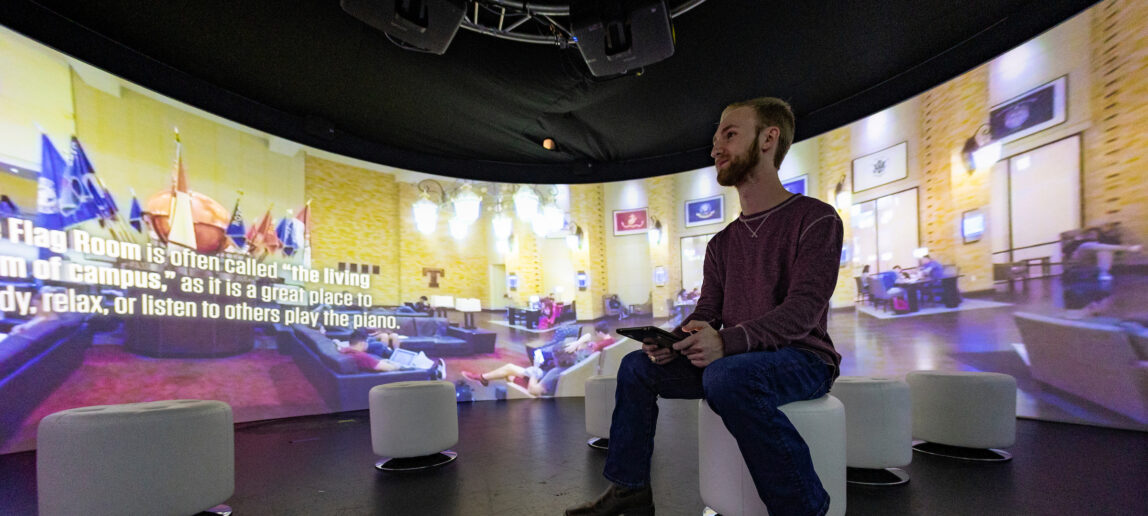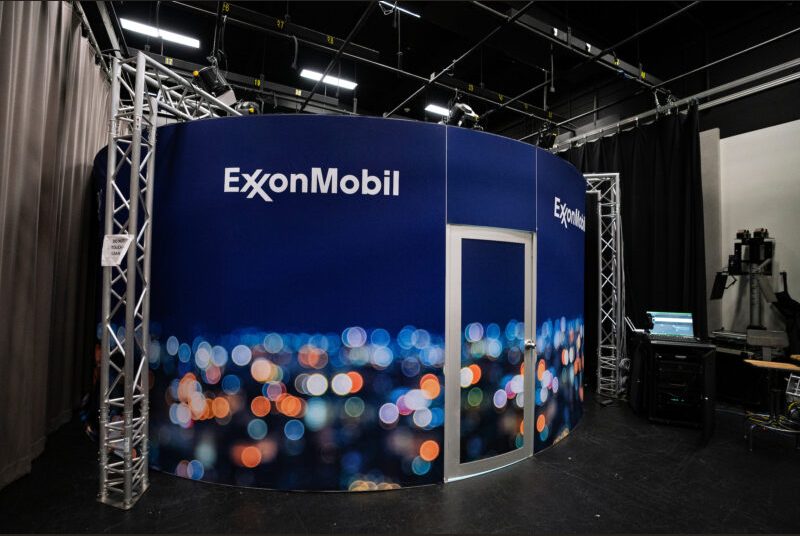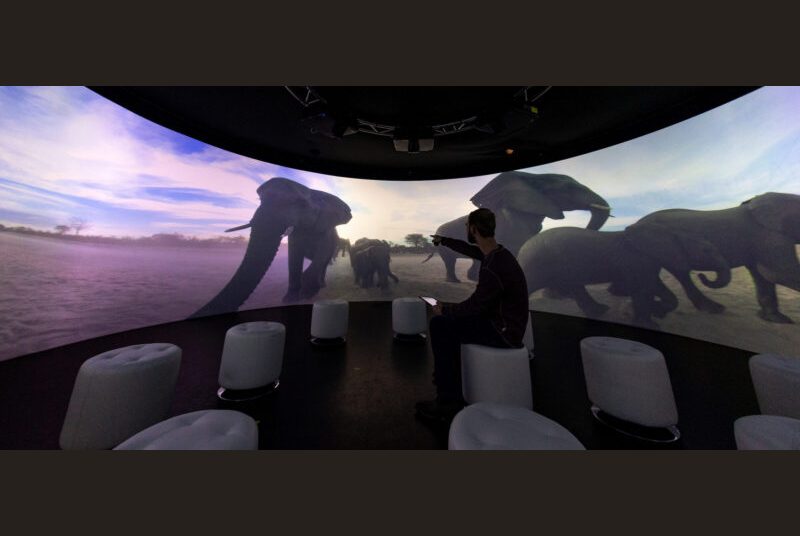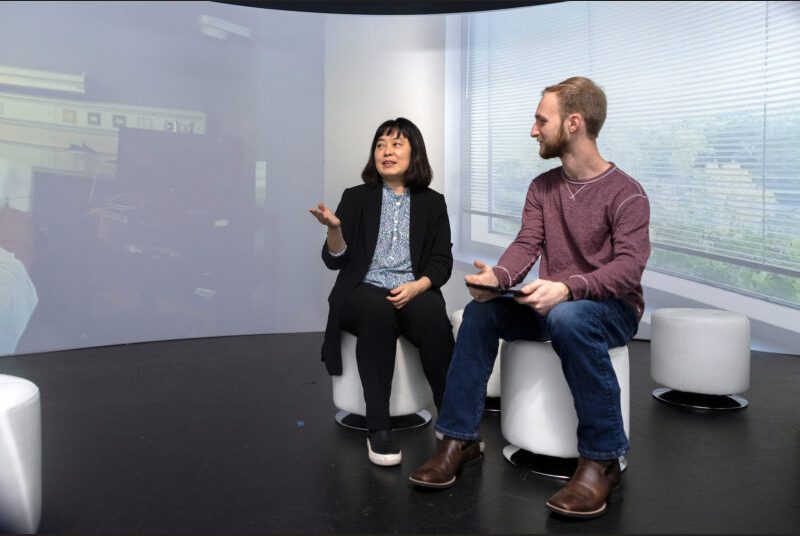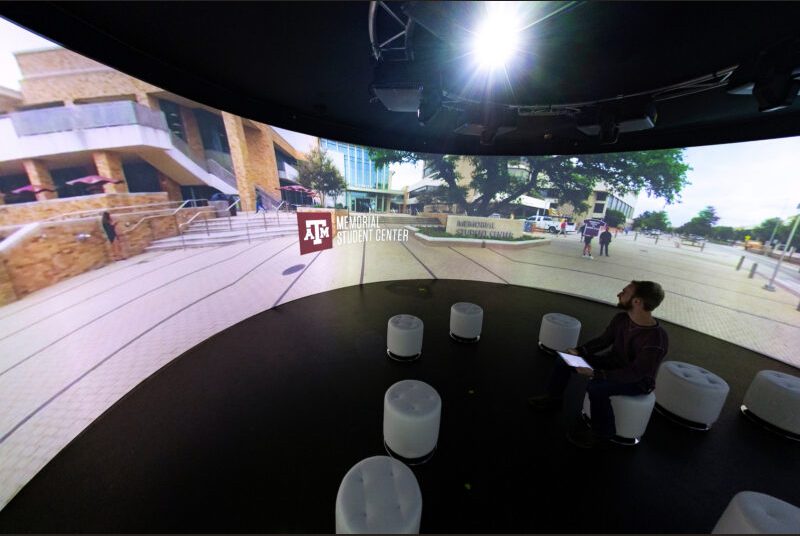ExxonMobil Donation Brings Immersive Igloo Cylinder To School Of Performance, Visualization And Fine Arts
Texas A&M University students now have the opportunity to learn in an immersive environment with a room-scale 360-degree screen thanks to a donation from ExxonMobil.
The oil and gas corporation has donated an Igloo Cylinder to the Texas A&M Foundation for use by the College of Performance, Visualization and Fine Arts.
“Texas A&M and ExxonMobil have had a relationship for a long time in regards to recruiting and cooperation,” said Jerrod T. Jones, public and government affairs manager for ExxonMobil’s Global LNG Value Chain. “So it’s a natural fit for ExxonMobil to look toward Texas A&M in the event that they wanted to do a donation of this type of equipment.”
The circular structure — which is located in Studio A of the Langford Architecture Center Building C — stretches 22.5 feet, with a height of 11 feet. Six projection screens are anchored at the top, and a cooling system regulates the temperature. About 10 people can comfortably sit inside.
The estimated value is $90,000, Jones said, and the decision on where to donate the Igloo came down to “who could best use the equipment.”
“It’s really immersive,” said Dr. Jinsil Hwaryoung Seo, associate professor in the visualization program, who worked with ExxonMobil to secure the donation. “You can close the door of the cylinder structure, and then when you’re inside, you’re enclosed by the whole 360 images and videos. You feel like you are somewhere else.”
The Igloo connection came through a current student. Angel Ham, a senior computer science major, is Seo’s research assistant on virtual reality nursing applications. Ham served as a summer intern for Chevron’s extended reality team, and a contact from the industry partner shared with him that ExxonMobil was looking to donate the Igloo.
Ham contacted Seo, who jumped at the chance. He said it was “the most excited I’ve ever seen her over text.”
“It was so cool to have the opportunity to have a network to be able to make that connection,” Ham said. “It really shows the power of networking. Keeping up with old contacts and building good rapport is always important.”
The Igloo will create a bridge for students between virtual and physical interactions, Seo said.
“It will really expand our research and artistic explorations — not just using headset-based virtual reality environments, but different levels of immersive environments,” she said. “We will incorporate various scenarios into the Igloo immersive space and create a great synergy in teaching and research.”
Virtual reality is often a one-person experience, Seo said, which can lead to users feeling disconnected from colleagues and collaborators. The Igloo encourages discussion and collaboration among students and instructors, she said.
In the first several weeks since the Igloo was assembled in Studio A, visitors and students have been stunned by its capabilities, Seo said. Students have experimented with virtual reality projects that have been converted to 360 experiences, and Seo is working to integrate sensors and controllers into the environment for more dynamic interactions.
The Igloo will assist with research projects, including Seo’s work with nursing education. Other areas will benefit, she said, mentioning the College of Performance, Visualization and Fine Arts’ dance program and the opportunity to integrate performers and creative effects.
One such project happened earlier this month. Students from the visualization and dance programs produced an interactive dance performance titled “The Color of Connection,” with faculty mentors Christine Bergeron, clinical professor and associate dean for academic affairs; Jennie Petuch, instructional assistant professor; and Seo. The system software developed by John Alberse, a visualization student in the Master of Science program, captured dancers’ movements in the Igloo space and created silhouettes of the dancers’ bodies surrounded by a fluid simulation, then projected those images on the 360 screen.
The benefits extend to other parts of the Texas A&M campus as well, Seo said. The Igloo could be used for research projects, educational programs and promotional videos for the university, allowing people to explore the campus virtually through 360-degree videos.
“We can invite anybody in on campus to explore new opportunities with us,” she said. “These days, people have a lot of 3D content for virtual reality. That content could definitely be viewed in this immersive environment, with little tweaks. Any research labs or academic programs, they could bring students here to test scientific research. I really hope to have more collaborative activities around the Igloo environment.”
